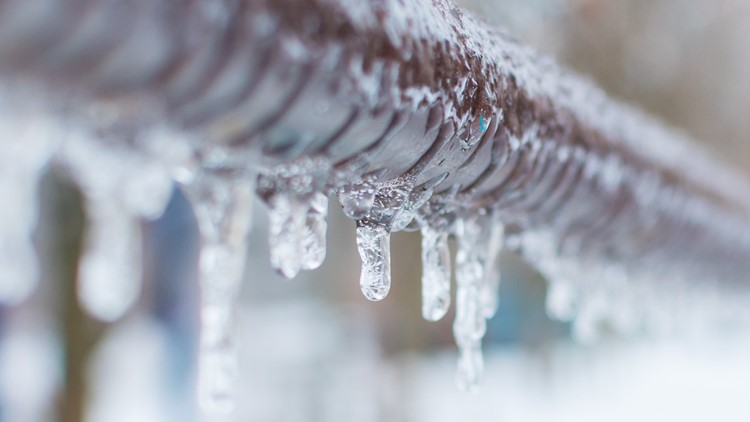Tips for Preventing Frozen Pipes in Winter: Expert Tips
Tips for Preventing Frozen Pipes in Winter: Expert Tips
Blog Article
Right here underneath you'll find some exceptional resources involving Helpful Tips to Prevent Frozen Pipes this Winter.

Winter can ruin your plumbing, specifically by freezing pipelines. Below's exactly how to stop it from occurring and what to do if it does.
Intro
As temperatures drop, the threat of icy pipes increases, potentially resulting in pricey repair work and water damage. Comprehending just how to avoid icy pipelines is critical for house owners in chilly climates.
Comprehending Icy Pipelines
What triggers pipes to ice up?
Pipelines ice up when exposed to temperature levels below 32 ° F (0 ° C) for prolonged periods. As water inside the pipelines freezes, it increases, putting pressure on the pipe walls and possibly triggering them to break.
Threats and problems
Icy pipelines can cause water interruptions, residential property damage, and costly repairs. Burst pipes can flood homes and create considerable architectural damage.
Indications of Frozen Piping
Determining frozen pipes early can avoid them from breaking.
How to recognize frozen pipes
Look for reduced water flow from faucets, uncommon smells or noises from pipelines, and visible frost on subjected pipes.
Prevention Tips
Insulating at risk pipes
Cover pipes in insulation sleeves or utilize warmth tape to secure them from freezing temperature levels. Concentrate on pipelines in unheated or external areas of the home.
Heating techniques
Keep indoor spaces properly warmed, especially areas with plumbing. Open cupboard doors to enable cozy air to flow around pipelines under sinks.
Shielding Outdoor Plumbing
Yard pipes and outdoor taps
Separate and drain pipes garden pipes prior to winter. Mount frost-proof faucets or cover outdoor faucets with shielded caps.
What to Do If Your Pipes Freeze
Immediate activities to take
If you believe icy pipes, keep faucets open to alleviate stress as the ice melts. Make use of a hairdryer or towels taken in hot water to thaw pipelines gradually.
Long-Term Solutions
Architectural changes
Consider rerouting pipelines away from exterior walls or unheated areas. Add added insulation to attics, cellars, and crawl spaces.
Upgrading insulation
Invest in premium insulation for pipelines, attics, and wall surfaces. Appropriate insulation aids maintain regular temperatures and reduces the risk of icy pipes.
Final thought
Protecting against frozen pipes calls for aggressive actions and quick reactions. By understanding the causes, signs, and preventive measures, homeowners can shield their plumbing throughout cold weather.
5 Ways to Prevent Frozen Pipes
Drain Outdoor Faucets and Disconnect Hoses
First, close the shut-off valve that controls the flow of water in the pipe to your outdoor faucet. Then, head outside to disconnect and drain your hose and open the outdoor faucet to allow the water to completely drain out of the line. Turn off the faucet when done. Finally, head back to the shut-off valve and drain the remaining water inside the pipe into a bucket or container. Additionally, if you have a home irrigation system, you should consider hiring an expert to clear the system of water each year.
Insulate Pipes
One of the best and most cost-effective methods for preventing frozen water pipes is to wrap your pipes with insulation. This is especially important for areas in your home that aren’t exposed to heat, such as an attic. We suggest using foam sleeves, which can typically be found at your local hardware store.
Keep Heat Running at 65
Your pipes are located inside your walls, and the temperature there is much colder than the rest of the house. To prevent your pipes from freezing, The Insurance Information Institute suggests that you keep your home heated to at least 65 degrees, even when traveling. You may want to invest in smart devices that can keep an eye on the temperature in your home while you’re away.
Leave Water Dripping
Moving water — even a small trickle — can prevent ice from forming inside your pipes. When freezing temps are imminent, start a drip of water from all faucets that serve exposed pipes. Leaving a few faucets running will also help relieve pressure inside the pipes and help prevent a rupture if the water inside freezes.
Open Cupboard Doors
Warm your kitchen and bathroom pipes by opening cupboards and vanities. You should also leave your interior doors ajar to help warm air circulate evenly throughout your home.

Hopefully you liked our excerpt on How To Avoid Freezing Pipes. Thank you for spending some time to read through our posting. Liked our entry? Please quickly share it. Let somebody else locate it. I recognize the value of your readership.
Call Today Report this page